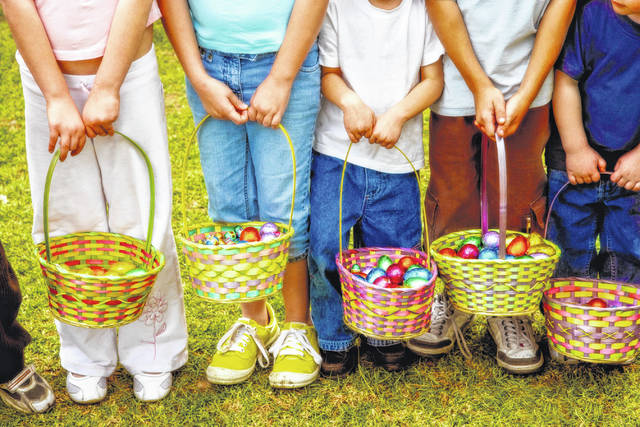
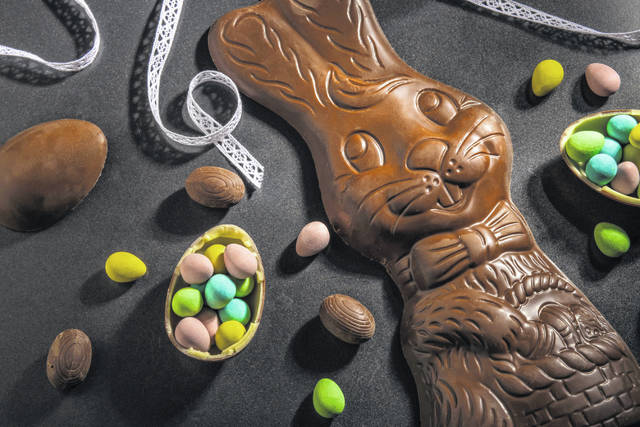
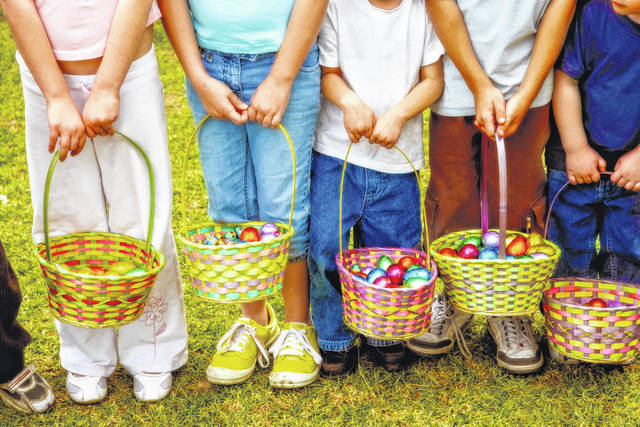
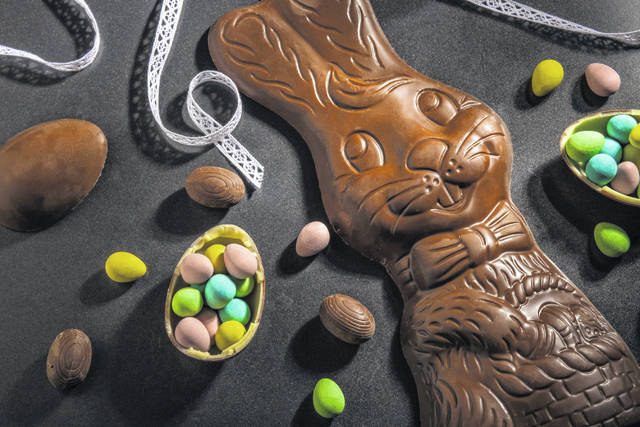
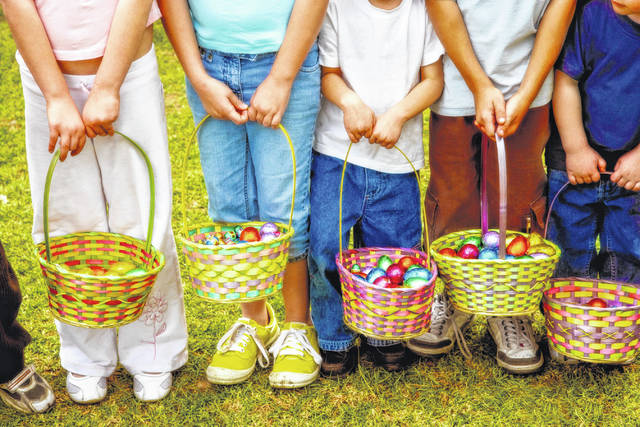
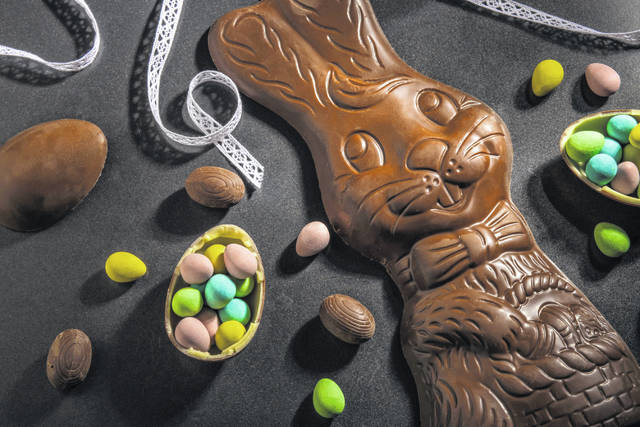
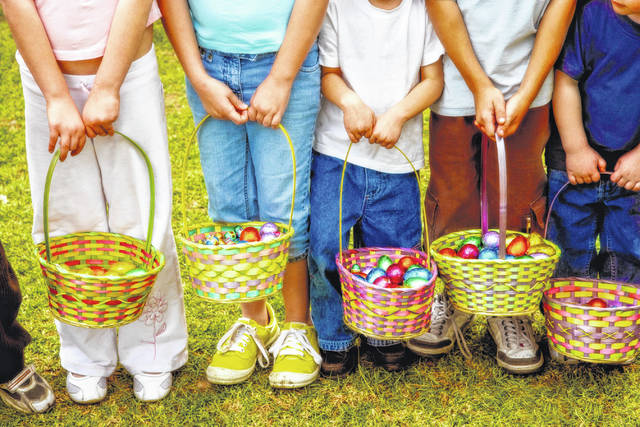
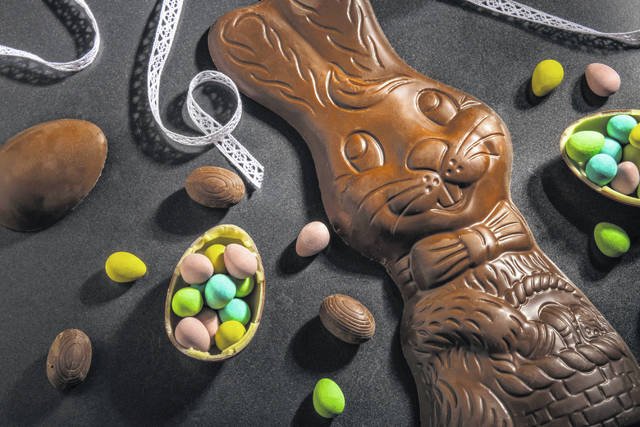
DARKE COUNTY — As spring tulips and daffodils begin to peek up from the soggy April ground, we celebrate arrival of Spring by ditching our coats and gloves to the back of the closet in favor of spring jackets and pastel sweaters. Celebrating this season also includes some sweet traditions, often beginning with the arrival of the Easter Bunny — that famed and elusive mythical hare that brings children (and adults) baskets filled with sugary delights on Easter morning. Like many holidays over the past century (or two), Easter has become a formidable retail opportunity – rewarding virtue with sweet confections of marshmallow chicks, jelly beans and chocolate bunnies – as the origins of some our Easter “faves” bear witness.
Unlike Santa Claus (a figure based upon the real person of St. Nicholas), the “Easter Hare” can be traced back to German Lutheran tradition, as a mythical creature who judges whether or not children have been obedient to their parents during the Eastertide season. In 1682, Georg Franck von Franckenau, a German physician and botanist, wrote an essay, De Ovis Paschalibus (“About Easter Eggs”), on the legend of the Easter Hare who carried colorful eggs in a basket, bringing toys and sweets to good children. Hares were also a common theme in medieval art, as it was (mistakenly) believed that hares were hermaphrodites, and could reproduce by themselves without a loss of virginity. Protestant German and Pennsylvania Dutch immigrants imported the idea of the Osterhase, or Easter Hare, to the United States in the 18th century, adding the idea that the famed Hare would leave colored eggs in the Sunday bonnets of good children before or while at church.
Eggs, too, have been a source of Easter legend and tradition since antiquity, often associated with fertility and rebirth. Throughout medieval Europe, people fasted from eating eggs during Lent, and would often hard-boil eggs and color them with flower dyes and other natural materials, in preparation for Easter. Eastern Orthodox Christians often dye the eggs red in remembrance of the death of Christ. Eastern European traditions, such as that in Ukraine, color and decorate eggs with elaborate cultural art, known as pysanky.
The conversion of Easter from a religious to secular holiday came as a result of entrepreneurial confectioners in the United States realizing that, like Christmas wherein candies and gifts are given to children, Easter could be a similar money-making enterprise.
In 1861, Boston confectioner, William Schrafft, experimented with a concoction of sugar, tapioca, corn syrup, pectin, and starch, creating a new pocket candy for Easter, similar to Turkish Delight, featuring a chewy flavored center surrounded by a sugary-coated exterior. Calling them “jelly beans,” Schrafft marketed the candy to the families of Union soldiers during the Civil War, as an alternative to sending chocolate (which would melt). Although popular in turn-of-the-century drugstores as “penny candy,” it was not until 1965 that the jelly bean’s true potential for variety and flavor was appreciated. The Herman Goelitz Candy Company, now known as “Jelly Belly,” began to experiment with the colors, shape and size of their jelly beans. Today, over 16 billion jelly beans are bought and consumed throughout the Easter season.
In 1890, a Pennsylvania drug store entrepreneur Robert L. Strohecker amazed his customers with a life-sized, five-foot hollow chocolate bunny that he had made as an Easter promotion. Whereas chocolate bunnies became a drug store staple for Easter baskets throughout the early 1900’s, the hollow chocolate bunny was just as delicious and cost less for the average shopper – only five cents per item. Chocolate sales slowed during WWII, but in 1948, Richard Palmer, Sr., took an interest in mass producing hollow chocolate bunnies, and with a $25K investment, opened up the R.M. Palmer Company, which today, contributing to the 90 million chocolate bunnies sold in the U.S. each year.
Peeps, those neon-bright, sugary marshmallow confections in the shapes of chicks and bunnies, began as the brainchild of Sam Born, a Russian immigrant who began making them in 1917. After acquiring the Rodda Candy Company in 1953, Born renamed the company Just Born in 1954, and began mass-producing Peeps in his Bethlehem, Pennsylvania factory, cutting the production time from 27 hours to six minutes. Today, in 2021, Just Born can produce 5.5 million Peeps in a single day, with annual sales exceeding $34.4 million. Changing flavors each year is one secret of the company’s success, attracting new Peeps fans. Producing 1.5 billion Peeps in 24 flavors, some of the new 2021 offerings include “Hot Tamale Fierce Cinnamon Chicks,” Fruit Loops, Sour Watermelon, along with returning favorites like Cotton Candy, Party Cake and Root Beer.
Whether munching on chocolate bunny ears or marshmallow eggs, people will be spending more money filling up their Easter baskets and bonnets this year. According to the National Retail Federation, a whopping $18.1 billion will go to purchasing Easter-themed fare this year, with $2.5 billion spent on chocolate.
Hopefully, the Easter Bunny will also include a toothbrush and toothpaste in each basket along with the many colorful, tasty treats of this Easter season. As many parents know all-too-well, going to the dentist can also be a costly annual tradition.



